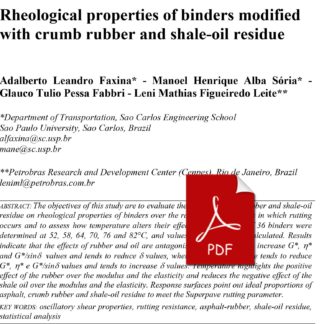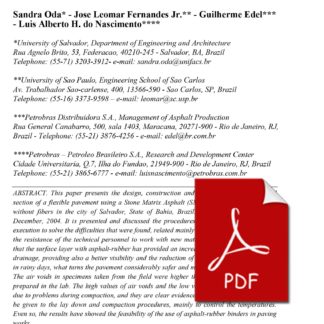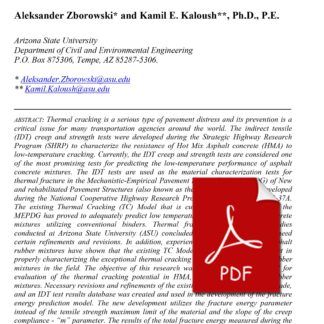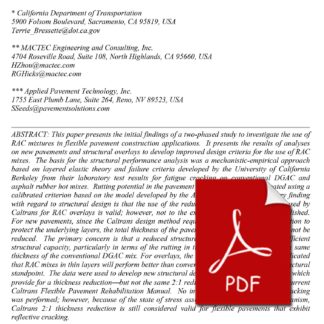Description
This paper presents the initial findings of a two-phased study to investigate the use of RAC mixtures in flexible pavement construction applications. It presents the results of analyses on new pavements and structural overlays to develop improved design criteria for the use of RAC mixes. The basis for the structural performance analysis was a mechanistic-empirical approach based on layered elastic theory and failure criteria developed by the University of California Berkeley from their laboratory test results for fatigue cracking on conventional DGAC and asphalt rubber hot mixes. Rutting potential in the pavement structures was also estimated using a calibrated criterion based on the model developed by the Asphalt Institute. The primary finding with regard to structural design is that the use of the reduced thickness design criteria used by Caltrans for RAC overlays is valid; however, not to the extent that was previously established. For new pavements, since the Caltrans design method requires a minimum structural section to protect the underlying layers, the total thickness of the pavement when RAC is used should not be reduced. The primary concern is that a reduced structural section may not provide sufficient structural capacity, particularly in terms of the rutting in the subgrade, as compared to a same thickness of the conventional DGAC mix. For overlays, the results of the M-E analyses indicated that RAC mixes in thin layers will perform better than conventional DGAC mixes from a structural standpoint. The data were used to develop new structural design criteria for RAC overlays, which provide for a thickness reduction – but not the same 2:1 reduction criteria provided in the current Caltrans Flexible Pavement Rehabilitation Manual. No investigation of the reflection cracking was performed; however, because of the state of stress associated with this distress mechanism, Caltrans 2:1 thickness reduction is still considered valid for flexible pavements that exhibit reflective cracking.







